Barnyard millet is a multipurpose crop grown for food and fodder. Millets are typical human foods and the first cereal grain used in the home. It is an ancient cereal grain gaining popularity due to its nutritional benefits. Cultivating barnyard millet is easy and can be done by beginners with little knowledge. These small-seeded grasses thrive as rain-fed crops in dry zones with marginal moisture and soil fertility.

Barnyard millet grain contains more micronutrients (zinc and iron) than other major cereals. In addition, because of its short growing season, In India, Pakistan, Japan, China, Korea, and Nepal, this millet is widely grown worldwide as a cereal crop. These millets can mature from seed to ready-to-harvest plants in 65–85 days. Barnyard millet is a short-term crop that is essential in densely populated areas.
Whole millet can be stored for at least two years. With the right temperature, rainfall, soil preparation, seed propagation tips, fertilizer application, organic pest and disease management tips, and cultivation practices, you can be sure to have a successful harvest of barnyard millet. This article will outline barnyard millet cultivation practices and its preferred growing conditions. It will also provide helpful tips and management practices for cultivating barnyard millet.
Scientific name of Barnyard Millet
- Indian Barnyard Millet: Echinochloa frumantacea
- Japanese Barnyard Millet: Echinochloa esculenta
- Indian Barnyard Millet is also known as Sanwa (Hindi), Oodalu (Kannada), Kavadapullu (Malayalam), Kuthiravali (Tamil), Udalu (Telugu), and Kira (Oriya).
Barnyard millet farming
Barnyard millet is an annual grass-like crop native to China, India, and parts of Africa. It grows rapidly and can reach maturity in as little as 45 to 60 days. Barnyard millet plants can reach heights of about 3 feet. The leaves are linear and have a glossy appearance. The flowers form panicles, and small edible grains form after flowering.
The plant’s leaves, stem, and flowers also form an essential part used as fodder. The leaves are green and vary in size and shape. The stems are long and slender, while the flowers are small and white. Barnyard millet is drought-tolerant and grown in a variety of soil types.
Barnyard Millet plant essential parts
Barnyard millet is a small-grained cereal crop grown for its high nutritional value. In addition, it is an essential crop because of its ability to grow in dry, infertile soil and its tolerance for acidic soils. The essential parts of the barnyard millet plant include its seeds, which are hard and covered with a thick hull. These are the sources of the grain.
In case you missed it: Red Banana Farming in India: How to Start, Cultivation Practices, and Panting to Harvesting Guide
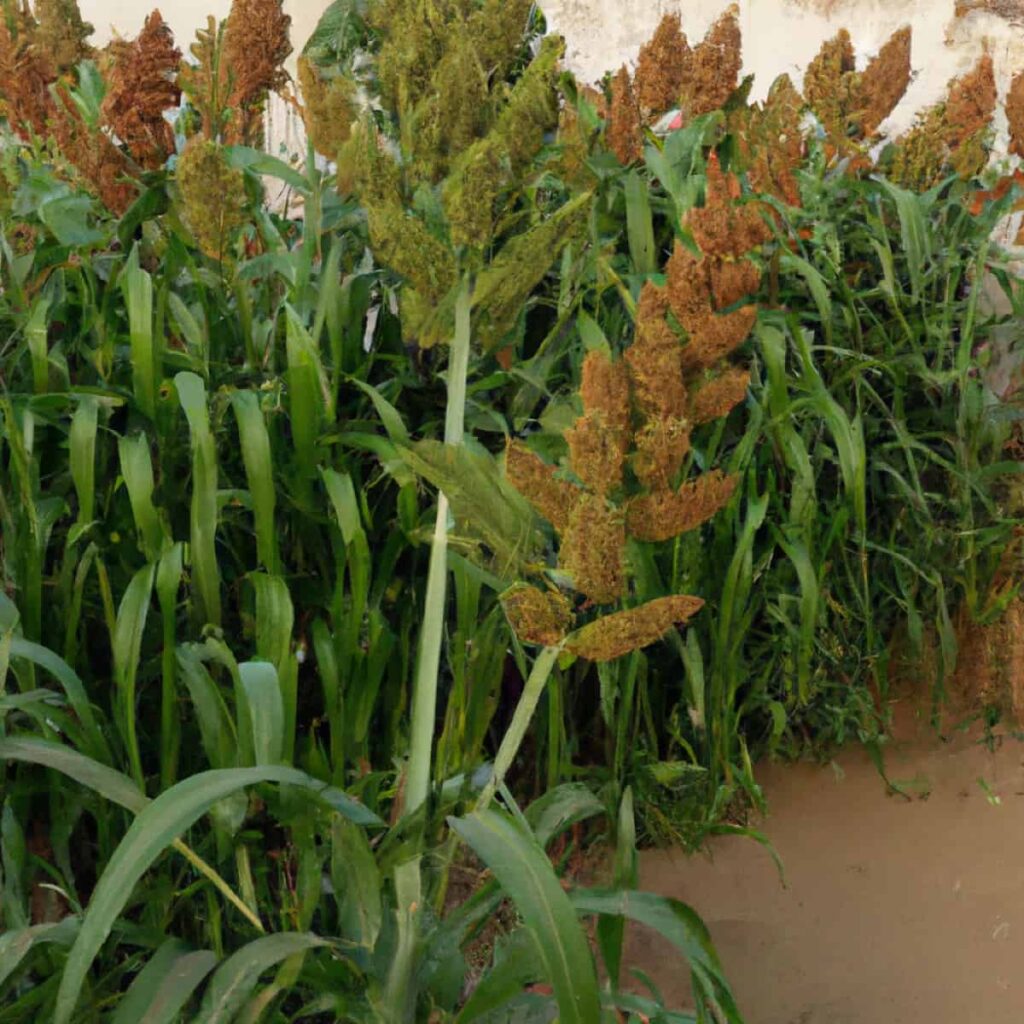
A step-by-step guide for Barnyard Millet farming
Barnyard millet is the best source of protein because it is highly digestible and an excellent dietary fiber source because it contains a good amount of insoluble and soluble fractions. As a result, it is an excellent source of dietary fiber, iron, calcium, magnesium, and other essential vitamins and minerals. In addition, this millet is highly effective at lowering blood glucose and lipid levels and is thus recommended for cardiovascular disease and diabetes mellitus. Millets are a significant food source in semiarid and arid regions worldwide.
In addition, they appear in the traditional cuisine of many others. Furthermore, this barnyard millet is high in bone-building minerals like phosphorus and calcium. As a result, barnyard millet has the highest antioxidant profile, which aids in treating non-communicable diseases and degenerative disorders such as cardiovascular disease and diabetes. As a result, it can be used in place of rice in dosa, idli, and dhokla batters. Linoleic acid is an essential fatty acid in barnyard millet, followed by oleic and palmitic acid.
Different varieties of Barnyard Millet
The most important consideration for increasing barnyard millet production is the selection of short-duration, high-yielding, drought-tolerant, disease-resistant, and agro-climatic varieties. Wide varieties of barnyard millet have been released in recent years. Barnyard millet comes in two varieties: Japanese and Indian. The Japanese variety is grown in Japan, China, and Korea. In contrast, the Indian variety is grown in India, Pakistan, and Nepal. VL 172 and VL 207, VL 29, Anurag, RAU 9, VL 29, RAU 2, RAU 3, Gujarat Banti-1, CO 1, CO 2, VL 181 and VL 29 are some Indian varieties.
Land preparation and soil requirements for Barnyard Millet farming
Soil should be prepared at least 4 to 5 days before planting. Prepare warmer seedbeds on well-drained soils. Weeds should not grow in seedbeds. The crop is grown in various soil types, but sandy loam soils that are fertile and have good draining conditions are preferred. Barnyard millet cannot tolerate standing water. It is most successful in laterite loams. Barnyard millet is primarily grown during rainy conditions. A pH level of 5.6 is highly recommended for millet cultivation. However, it can also grow in soils with pH levels as low as 4-5.
In case you missed it: How to Grow Hydroponic Vegetables Indoors: Key Rules, Methods, and Tips
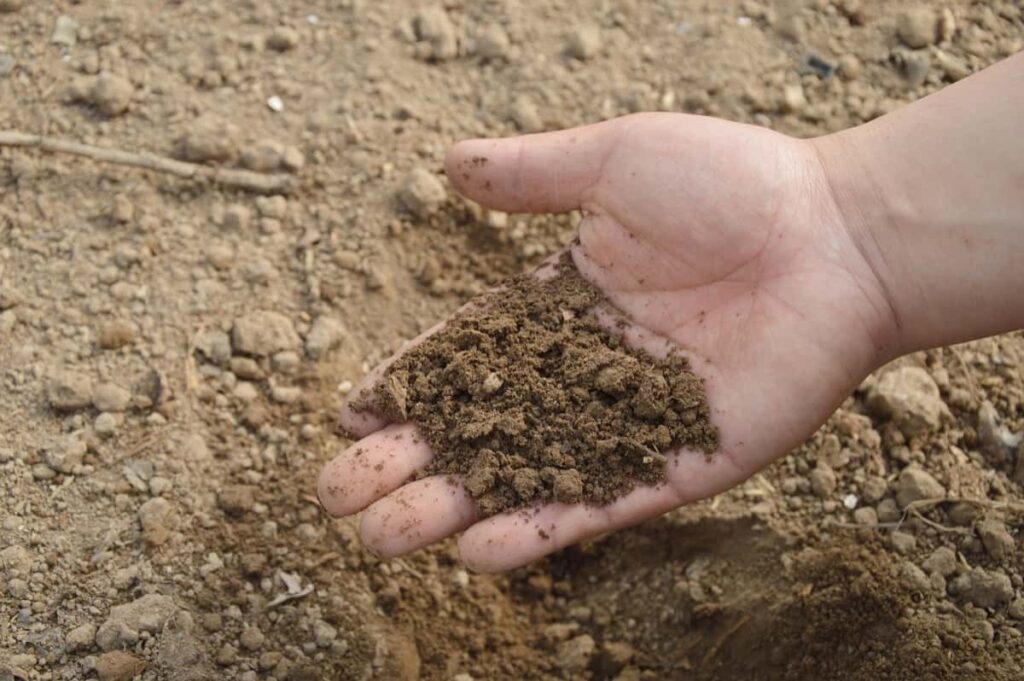
Temperature, climate & rainfall for requirement Barnyard Millet farming
Barnyard millet Plants are generally short-day plants, but some millet varieties are day-length neutral. These plants are sensitive to low temperatures during the seedling and flowering stages. High daytime temperatures are required for grain maturation. Under ideal climatic conditions, seed emergence takes 2–4 days. Crops thrive in rainfall ranging from 200 to 1500 mm, with the majority occurring in areas receiving 250 to 700 mm.
Early-maturing cultivars have the lowest rainfall areas. Despite itsd resistance, Barnyard millet requires even rainfall throughout the growing season. Heavy rains during the flowering period can result in crop failure. Adapted to climatic temperatures, it grows well in the tropics and on soils with fragile ecology. Barnyard millet tolerates a wide range of temperatures. Barnyard millet can be grown at elevations of up to 2700 meters above sea level, with annual rainfall ranging from 200 to 400 mm.
Propagation of Barnyard Millet
Barnyard millet seeds are an excellent way to propagate for cultivation purposes. In most cases, seeds are the best propagating materials for most millets crops grown worldwide.
Barnyard Millet farming nursery raising and transplanting
Barnyard millet is primarily grown by raising nurseries, transplanting seedlings into the main field, and by direct seeding with a seed drill. A nursery for one hectare of the main field requires approximately 400 square meters of land. The nursery was raised on high ground with a sound drainage system. Seedlings that are 20 to 25 days old are ideal for transplanting and producing the highest yields.
Spacing between plants in Barnyard Millet farming
The seed quality required for sowing a hectare of barnyard millet fields depends on the method of sowing (broadcasting, transplanting, seed drilling, or Kera). A nursery will require approximately 4 to 5 kg of barnyard millet seeds, whereas broadcasting one hectare of land will require 8 to 10 kg of seed. To control seed-borne disease, the seed must be treated with 2 to 3 g/kg of thiram and agosan.
Recommended spacing is 15 x 10 cm and 20 x 10 cm, respectively. Transplanting produces a uniform plant stand and increases height, tiller number, and fingers/ears, which are directly related to increased production. Shallow planting at a depth of 5 cm provides better support and allows for quicker tillering. Even when it rains, the transplanted crop does not become lodged. Line sowing requires 8 to 10 kg of seed per hectare, while broadcasting requires 12 to 15 kg of seed per hectare.
In case you missed it: Earning 31 Lakhs from 9 Acre Jamun Farm: The Success Story of a Fruit Farmer in India
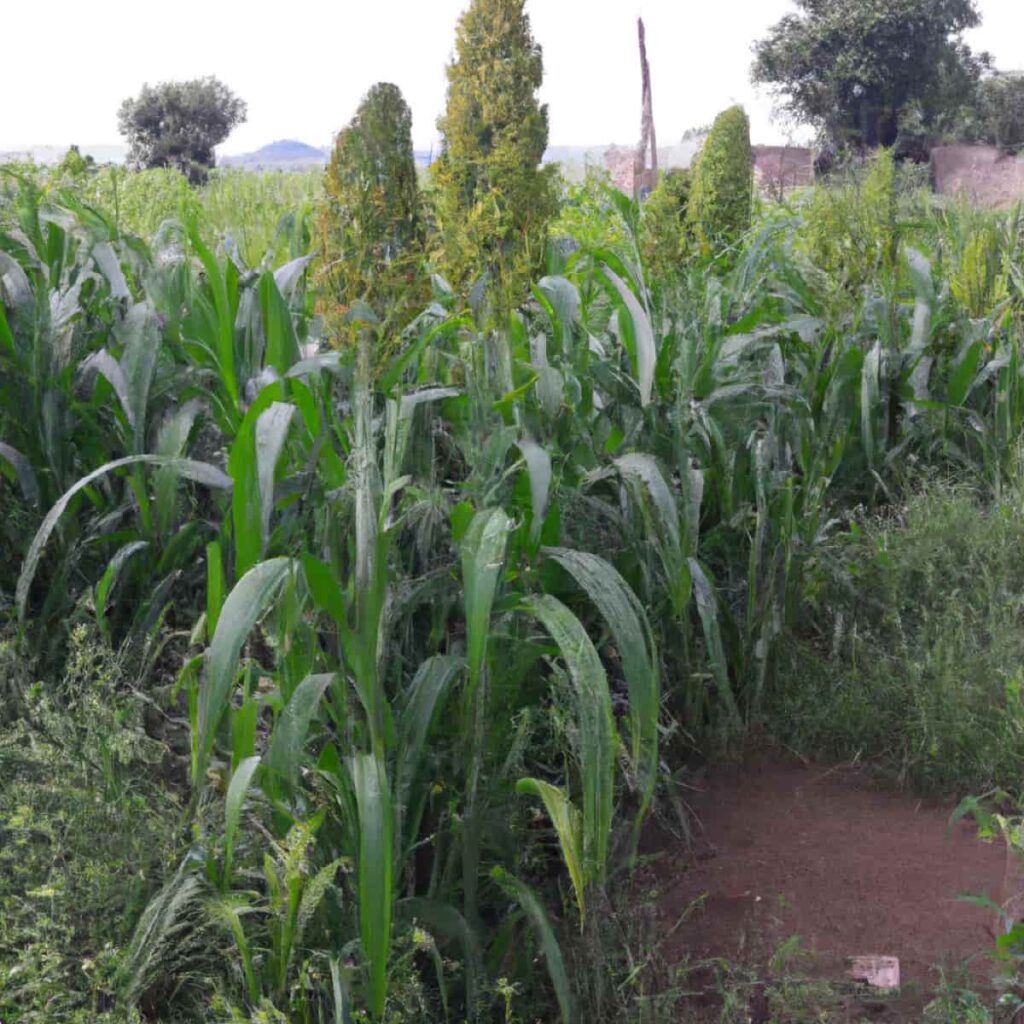
Planting tips for Growing Barnyard millet
The best time for planting is between early October and November, depending on the intended use. In general, soil temperatures should be 18 °C or higher. Planting densities ranging from 150 000 to 265 000 plants/ha are recommended. Plant the seed in a firm, mellow, moist seedbed. Because Barnyard millet are so small, shallow planting is recommended to ensure good seed-to-soil contact.
Barnyard Millet fertilization tips
Millets are typically grown on less fertile soils and produce high yields when heavily fertilized. Because these plants are deep-rooted and can use residual nitrogen, phosphorus, and potassium, they may not require the same fertilization levels as other summer grains. Organic nitrogen sources, such as animal manure or a leguminous cover crop, can meet nitrogen requirements. These characteristics increase the appeal of barnyard millet in low-input, dryland production systems. Before fertilization, soil testing and analysis are recommended.
Barnyard Millet farming irrigation tips
During the growing season, barnyard millet requires adequate irrigation. If the soil is dry during and after seeding, irrigation can help with stand establishment. Barnyard millet crops require less irrigation than other summer grain crops. Because it does not grow well in waterlogged soils, the crop is typically grown under rainfed conditions.
Maximum yield is best with around 50% of available soil moisture. The number of irrigations varies according to the amount of rain that falls during the season. With a rainfall of around 450 mm, irrigation is provided as needed based on the nature of the soil. Adequate moisture is required at the flowering, tillering, and grain-filling stages.
Weed control practices in Barnyard Millet farming
Thinning and weeding is most important when barnyard millet is 2.5 to 5 cm tall. In line sowing, two inter-cultivations and one hand weeding are performed. Two weedings in a broadcast crop Weeds are most prevalent in broadcast crops. Weeding is made more accessible by sowing in a single line at a distance of 25 cm. When it comes to sowing, the transplanting method is also the best way to control weeds.
In case you missed it: How to Start Dairy Farming in Cambodia: Key Rules, Business Plan, Breeds, Cost, Profit, License, and Management
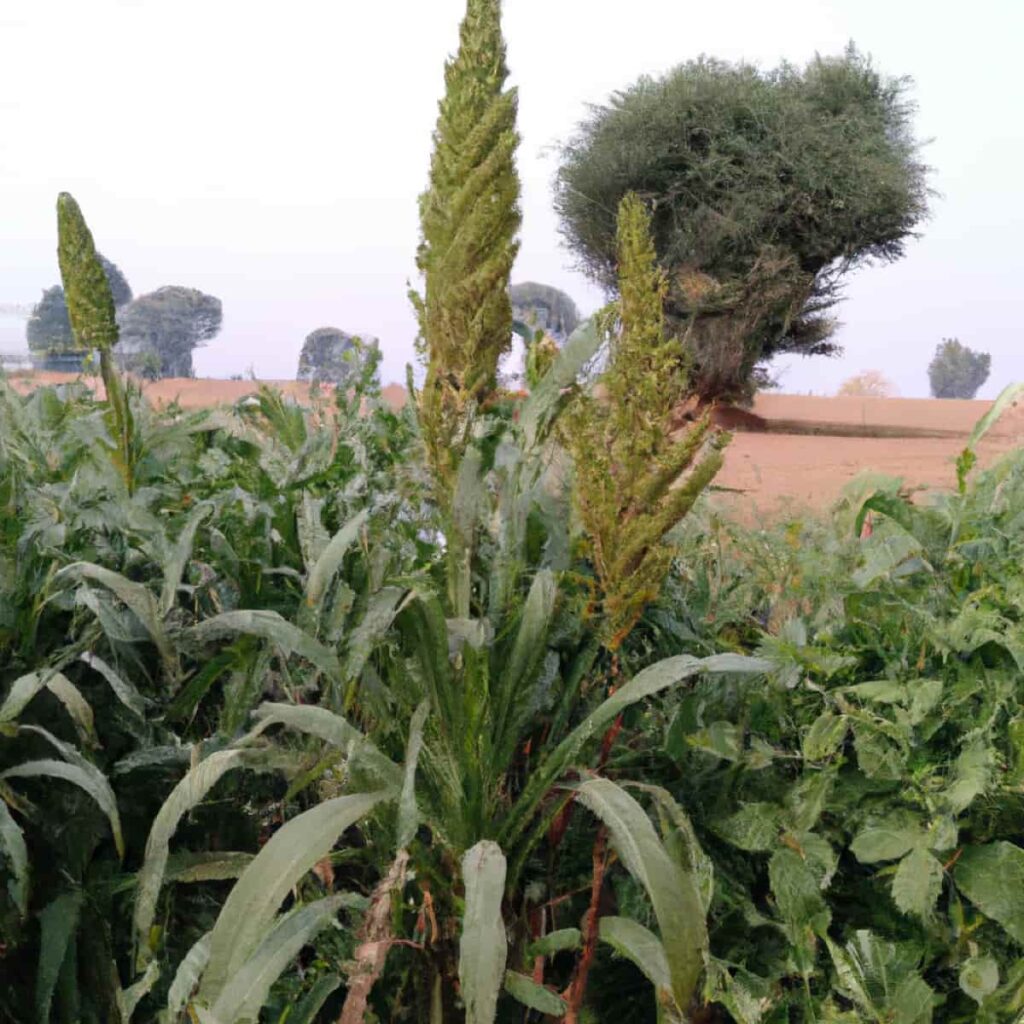
Wild barnyard millet can be a serious weed. Because it is difficult to distinguish from cultivated varieties in the vegetative stage, it usually matures and sheds its seeds before barnyard millet is harvested. Crop rotation can be used effectively to control these types of weeds. The weed-free seed is the first step in preventive control.
Farmers must ensure that all millet planting equipment is free of weed seeds. Weed control around ditch banks, roadsides, and field margins can help prevent weed seeds from entering the fields. Mechanical controls should be used to prepare the seedbed before planting millets, and millets planted in rows for seed provide producers with an early start on weed control.
Organic management of Pests and diseases in Barnyard Millet farming
Hairy caterpillars are said to be the only serious pest for barnyard millet (Amsacta albistriga). Shoot fly is another serious pest causing significant yield losses is shoot fly. Control measures through early sowing before the monsoon arrives are the cheapest and most effective control methods. Jassid, beetles, and grasshoppers are other insects that cause damage by spraying plant-based products such as neem extracts, neem oil, and pongam oil that can be used to control pests.
Biological agents such as fungi, insects, bacteria, and viruses can also control pests and diseases. Insects can be killed by animal extracts such as fish oil and bacterial spinocin. Virus particles and many lepidopteran pests can also be killed using polyhedral bodies. Can effectively control beetles, caterpillars, and jassids. Spraying or dusting can be used to control grasshoppers.
Although the crop is affected by three different smuts, the grain smut caused by Ustilago panicifrumentacei is the most serious. Pre-sowing seed treatment with thiram is recommended to control the disease. Head smut, kernel smut, leaf spot or blight, and leaf blast are other common diseases in barnyard millets. Modern cultural and organic practices can control barnyard millet diseases.
The cultural control practices listed below are economically feasible and have very low disease losses. The cultivator should correctly identify the diseases that will limit production and then use a combination of controls. Crop rotation is the most commonly used cultural practice for disease control. Crop rotation will prevent pathogen populations from growing to dangerous levels. Crop rotation does not prevent disease development, but it does help to reduce damage from most diseases.
The use of fertilizer can help prevent the spread of certain diseases. This practice varies depending on the crop and the disease. Still, nitrogen out of balance with other nutrients generally promotes the development of foliar diseases and predisposes some plants to other diseases. A potash-rich fertilizer can help reduce disease development when combined with other elements.
Crop residue burning can result in the destruction of valuable organic matter as well as the creation of an air pollution problem. However, it is a highly effective method of eradicating any disease-causing organisms associated with crop residue. The removal of diseased plants as soon as they are discovered is an effective method of reducing the spread of a destructive disease.
Harvesting of Barnyard Millet
Barnyard millet can be harvested when it reaches maturity, as soon as 40–55 days after it blooms. Harvesting mature heirlooms When the crop is ripe and dry, grains will pop out of the heads cleanly. The crop can be harvested when the seed moisture content falls below 15%. Still, artificial drying for 10 to 12% moisture after harvest is required to prevent storage moulds.
Matured seeds range from white to brown, greenish, and purple. Harvesting times vary greatly depending on location, soil conditions, and variety. The susceptibility of cultivated varieties to shattering varies. To collect the ear heads from the field, 3 to 4 pickings are usually required. When a different variety is grown, natural ripening is expected to be uneven, necessitating more pickings. Earhead harvesting by hand is generally more labour-intensive.
Barnyard millet can be harvested in different ways by hand with a knife or sickle. After harvesting, the heads should be dried in heaps on the ground or threshing floor. A combine harvester can also be used to harvest. However, combine harvesting should be adjusted to properly thresh the small seed of barnyard millet.
Barnyard Millets yield
A well-irrigated crop yields 25 to 35 quintals per hectare. A rain-fed crop can produce 12 to 15 quintals per hectare, and straw for fodder can produce 20 to 25 quintals per hectare.
In case you missed it: Integrated Pest Management: Principles, Methods, Advantages, Disadvantages and Ideal Management
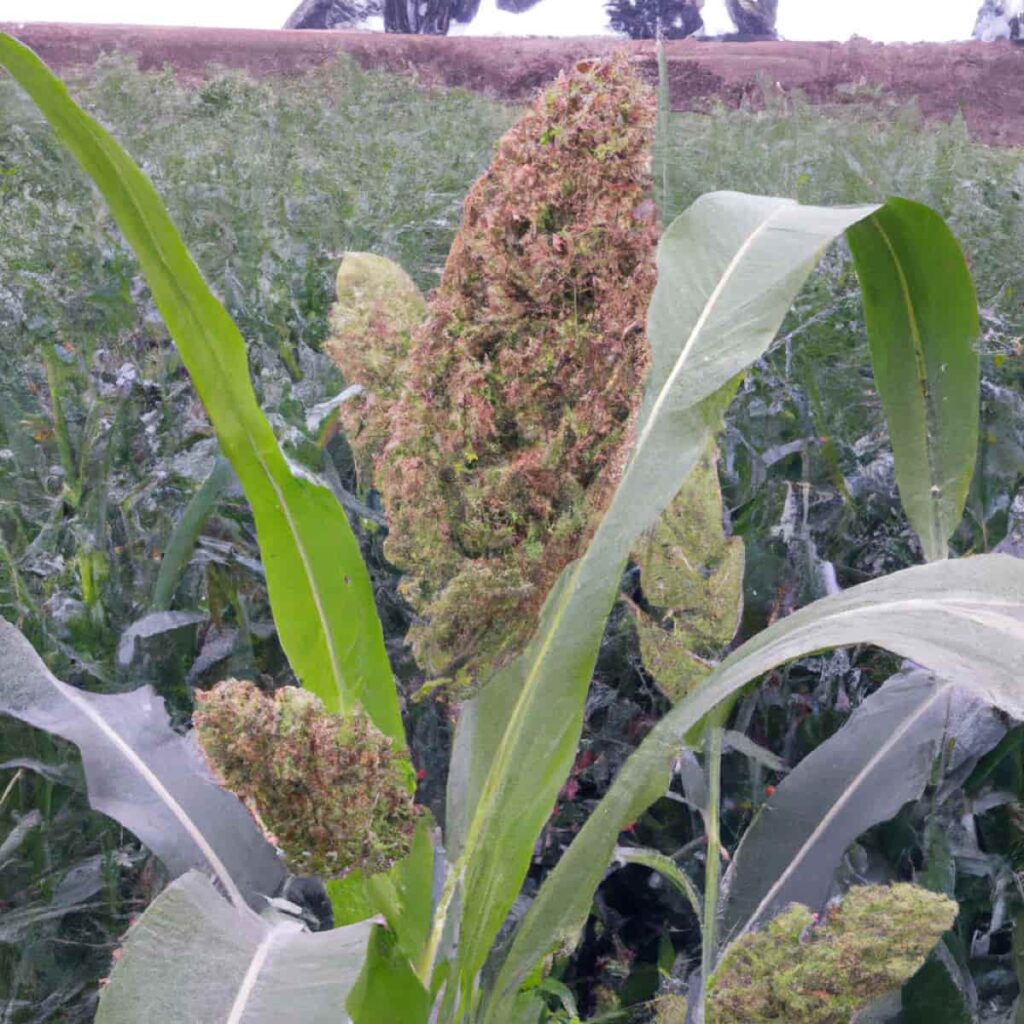
Post-harvest handling
Storage If seeds are not properly dried, they can develop mold, and grain germination (sprouts) may occur if the grains are not properly dried. Therefore, the grain should be stored in a cool place with a maximum moisture content of 12 to 13%. And several factors contribute to the loss of viability and nutrients, including insect, bird, rodent, and mold damage. We can also store barnyard millet in a solid-walled container as unthreshed heads.
Utilisation of Barnyard Millet
Barnyard millets can be cooked to give them a more earthy, nutty flavour. It makes Khichdi with a handful of steamed vegetables. It is ideal for Tiffin items such as Dosas, Idlis, and Upma. In addition, it’s used to make a delicious dessert called “Kheer.” During pregnancy, 100 g of barnyard millet provides 100% of the daily iron requirement and 67% of the daily amount. It also contains a lot of calcium, which can help your teeth and bones.
- Crops Grown in Summer Season: Best Choices for Summer Gardening
- Organic Pest Control for Tomato Farming
- How to Maximize Sheep Farming Profit
- Broccoli Varieties: Choosing the Right Cultivars for Your Farm
- How to Raise Pigs in Your Own Backyard: A Comprehensive Guide
- Budget Friendly Sheep Shed Ideas: Cheap and Low-Cost Tips
- How Much Do Cattle Farmers Make: Revenue Streams in Cattle Farming
- Management Pests and Diseases in Your Cotton Field
- Sheep Farming Business Plan for Beginners
- Aquaponic Farming at Home: A Step-By-Step Guide
- Profitable Village Farming Business Ideas in 2024
- High-Yield Aquaculture: Fast-Growing Fish for Farming
- Effective Fish Pond Construction Techniques for Beginners
- Irrigation and Water Management in Pineapple Farming
- Blossom to Harvest: Mastering Flowering and Pollination in Papaya Farming
- Pig Fattening Essentials: From Selection to Sale for Beginners
- Raising Wagyu Cattle: A Complete Guide for Premium Beef Production
- Soil Types and Their Water Holding Capacity
- Optimizing Irrigation Schedules for Coconut Groves for Enhanced Yield
- Espresso Your Garden: Coffee Grounds for Healthier Acid-Loving Plants
- The Best Soil Mix for Snake Plants: How to Mix Your Own Snake Plant Soil
- Green Thumb Success: Expert Tips for Cultivating Greenhouse Beans All Year Round
- Bloom All Year Round: The Ultimate Guide to Indoor Hyacinth Care
- Eco-Friendly Gardening: How to Make Liquid Fertilizer from Kitchen Waste
- Ultimate Guide to Grow Anise in Pots: Explore Seed Propagation to Harvesting
- Guide to Raising Chester White Pigs: Discover Breed Facts to Growth Management
- Mastering the Elegance: The Ultimate Guide to Weeping Cherry Tree Care, Planting, and Maintenance
- Ultimate Guide to Planting Garlic in Grow Bags: Growing Strategies for Beginners
- How to Fix Spider Plant Leaf-Related Problems: Natural and Organic Remedies
- 10 Reasons Why Your Tulsi Plant is Shedding Leaves: Home Remedies and Solutions
- Optimizing Growth and Yield: The Advantages of Palm Bunch Ash Fertilizer
- Utilizing Neem Oil Extract as a Natural Pesticide for Hydrangea
- From Soil to Harvest: Various Ways in Which Farmers Can Use AI Tools
- Steps to Encourage and Induce Citrus Flowers: A Comprehensive Guide
- How to Fix Snake Plant Leaf-Related Issues: Natural and Organic Remedies
- Transform Your Garden into a Fragrant Oasis with Raat Ki Rani (Night Blooming Jasmine)
